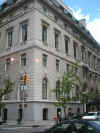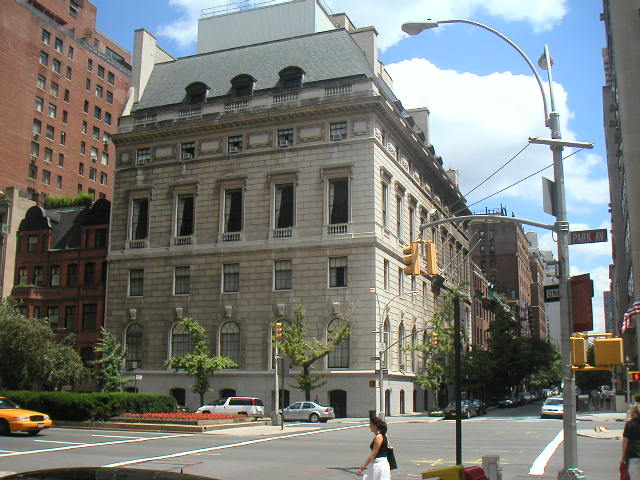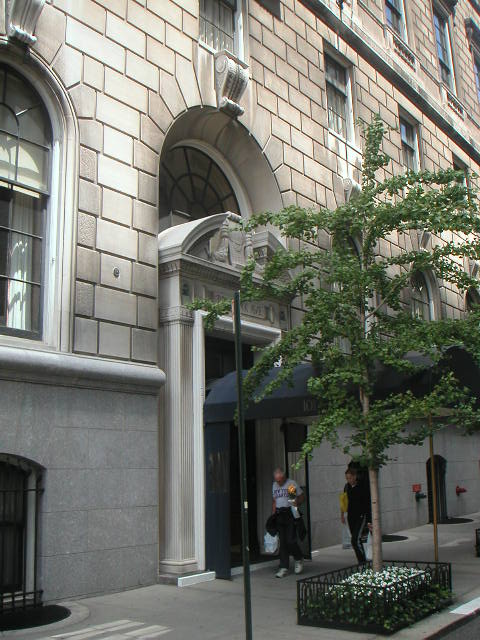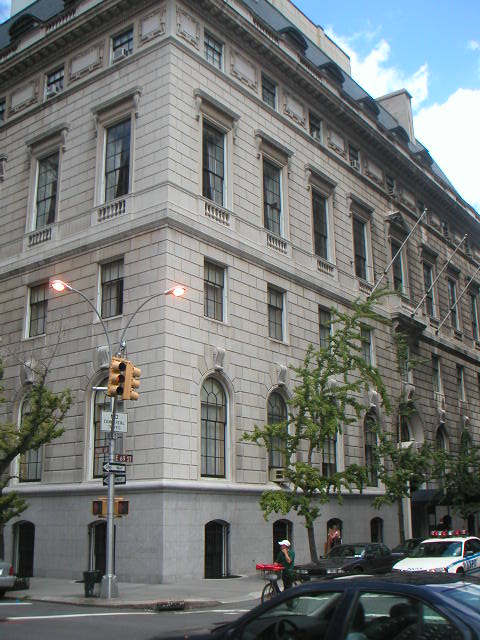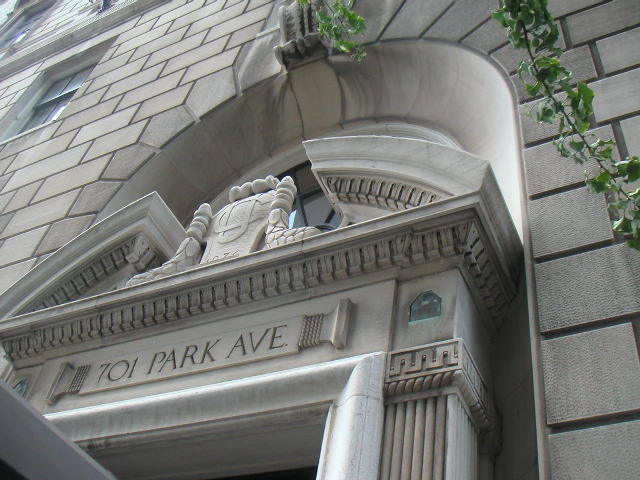|
Some commentary by
various authors;
Andrew S. Dolkart, "Touring the Upper East Side, Walks in Five Historic
Districts" (The New York Landmarks Conservancy, 1995),
"the dull, somewhat overblown exterior is designed in an English
Renaissance manner that alludes to the gentlemen's clubs of London, but
lacks the finesse of the clubs on Pall Mall." Such an assessment may be
right about finesse, but is a bit harsh as Delano & Aldrich's design is
very elegant and very refined.
Robert A. M. Stern, Gregory Gilmartin and Thomas Mellins,, "New York 1930,
Architecture and Urbanism Between The Two World Wars" (Rizzoli
International, 1987),
"...[it] was one of the last great monuments of the American Renaissance
and the last in a chain of imposing, Classicly inspired clubhouses that
extended back to McKim, Mead & White's Century Club of 1891.
Regreattably, the new Union Club replaced a minor masterpiece of the
pre-war era, McKim, Mead & White's Geraldyn Redmond house. With
bittersweet mockery Standford White's son, the architect Lawrence Grant
White, reputedly wrote to Delano & Aldrich requesting that the following
inscription be placed above the front door: 'Conceived by the Genius of
McKim, Mead & White. Destroyed by the Fury of Delano & Aldrich.' The
quiet limestone Georgian design clothed a complexly organized, elegantly
proportioned set of Classical rooms that enabled members to enjoy all of
the comforts of twentieth-century life, including ticker-tape reports of
stock-market transactions, pneumatic-tube service from Wall Street, as
well as year-round air-conditioning and humidification. William Delano's
plan was based in part on his design for the Willard Straight house of
1913, and his Kinickerbocker Club of the same year. Brilliantly focused
on a double-height central entrance rotuda, its cross-axial hallways
were raised a level above the street and reached by a gracious
staircase. The second floor, an entresol, contained private dining
rooms, while the third, returing to the grand scale of the first,
contained the principal dining room as well as the library. Bedrooms
were located on the fourth floor, their comparatively small windows
alternating with elaborately carved panels to form a frieze below the
cornice, while squash courts and locker rooms were housed in a high
masard roof. The bold simplicity of the exterior contrasted with the
intricacy of the interior spaces; vaulted ceilings ranged form the
deeply coffered dome over the entrance rotounda to the shallow coffered
vault of the north louge. Ceiling rosettes concealed the
air-conditioning grilles in the main lounge and writing room. Elaborate
cyrstal chandeliers from the previous clubhouse were usedin the card
room, while simple pendant globes of a distinctly Modern Scandinavian
character were the principal ornament of the English oak library. The
dressing room lounge on the sports floor was treated as a tented room
furnished with rattan."
|
